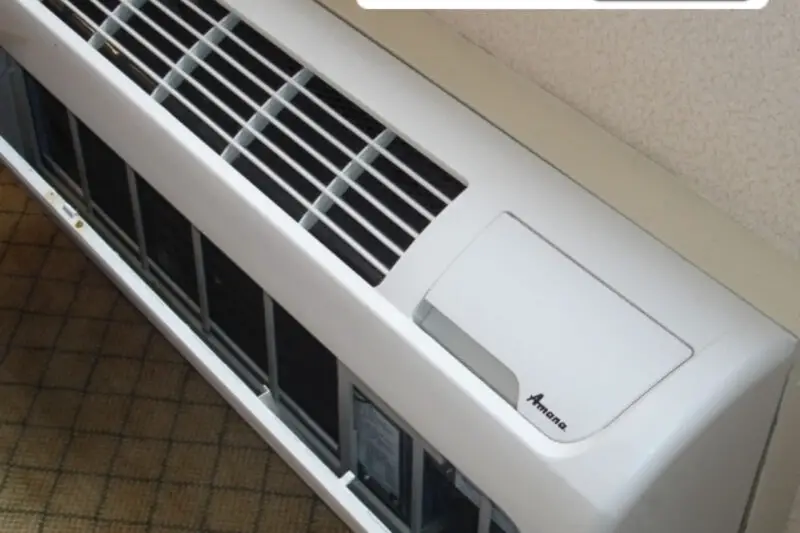What is HVAC and What Does PTAC Stand For in HVAC? A ductless, standalone air conditioner that heats and cools tiny spaces is known as a packaged terminal air conditioner, or PTAC. In numerous hotels and motels around the nation, they are most frequently spotted under the windows. Hotels, hospitals, senior housing facilities, flats, and residential additions like sunrooms all employ PTACs to save expenses and improve energy efficiency.

Electric heat or reverse cycle heat pumps are both options for PTACs. PTACs exist in four distinct cooling capabilities ranging from 7,000 BTUs to 17,000 BTUs, although having standard dimensions of 42×16 inches, 36×15 inches, and 40×15 inches. Amana, GE, Train, Friedrich, and LG make 220 volt models.
How It Operates
PTACs heat and cool. These types of units cool air with refrigerant or fresh air. PTACs have an outer condensing coil and an inside evaporator coil. Comparable to fresh air intake is opening a window. The PTAC pulls outside air through a rear vent. Some models also include an inbuilt dehumidifier. Bluco Mechanical HVAC services NYC company offers all HVAC services there is.
Popular and effective is recirculating indoor air with a refrigerant. The refrigerant cools the coil to eliminate heat and humidity. Fans and a vent within the appliance release the air. You may manage the air temperature with a wall thermostat or the PTAC’s controls. Wall thermostats can install programmable controllers, energy management systems, and Wi-Fi-compatible options.
Energy management systems can range from simple “smart” thermostats to complicated smart home systems that regulate appliances, electronics, lighting, and temperature. These grid-connected technologies use energy effectively.
PTACs have resistive electric heat. Heating the wires need a blow dryer-like fan. Some PTACs include a heat pump. PTACs often use electric resistive heat. A heat pump works like a window AC in reverse. By adjusting the freon flow, the device sends hot air into the building and cold air out the back. Heat pumps consume 25–75% less energy than electric heaters.
Window Unit VS. PTAC Unit
Regarding efficiency and commercial components, PTACs differ from window units. A window unit has vents on the side of the casing and hangs outside of a wall. While a PTAC has solid sides, it cools the outer coil by pulling air from the side vents. Additionally, a PTAC is flat against the wall, leaving just the grill visible from the outside. The majority of window units also lack heat.
Money Saved
By just managing the climate in the areas you need to be heated or cooled, PTACs save your energy costs. A massive heating and cooling system that regulates the climate of the entire building is particularly expensive in a commercial setting like a hotel or hospital since it must be operating all the time.

A PTAC only cools one room. Each room’s temperature can be adjusted to the user’s liking.
Not just business structures profit from this. In difficult-to-cool sections of the house, such as lofts and attics, homeowners frequently add PTAC units. Sunrooms and other home additions make excellent PTAC locations. These systems are frequently used to heat and cool small homes. By using a PTAC in this situation, homeowners can avoid having to upgrade the ductwork that connects to the current HVAC system.
Last Words
A PTAC is a cost-effective option for heating or cooling individual rooms in a house or commercial structures like hotels, flats, or senior living facilities. It is a straightforward alternative for climate management and costs significantly less than installing a whole HVAC unit because of how simple it is to install and the lack of ducting.
For more knowledge and assistance on commercial HVAC near me contact Bluco at (929)447-2077. We’ll be waiting! You can also visit our website to learn How To Clean PTAC Units and more now!



No Comments
Be the first to start a conversation